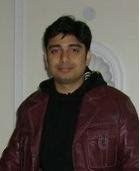Foremost Syntax
foremost [-h][-V][-d][-vqwQT][-b
Available Options
-h Show a help screen and exit.
-V Show copyright information and exit.
-d Turn on indirect block detection, this works well for Unix file systems.
-T Time stamp the output directory so you don’t have to delete the output dir when running multiple times.
-v Enables verbose mode. This causes more information regarding the current state of the program to be dis-played on the screen, and is highly recommended.
-q Enables quick mode. In quick mode, only the start of each sector is searched for matching headers. That is,the header is searched only up to the length of the longest header. The rest of the sector, usually about 500 bytes, is ignored. This mode makes foremost run con- siderably faster, but it may cause you to miss files that are embedded in other files. For example, using quick mode you will not be able to find JPEG images embedded in Microsoft Word documents.
Quick mode should not be used when examining NTFS file systems. Because NTFS will store small files inside the Master File Table, these files will be missed during quick mode.
-Q Enables Quiet mode. Most error messages will be sup-pressed.
-w Enables write audit only mode. No files will be extracted.
-a Enables write all headers, perform no error detection in terms of corrupted files.
-b number Allows you to specify the block size used in foremost. This is relevant for file naming and quick searches. The default is 512. ie. foremost -b 1024 image.dd
-k number Allows you to specify the chunk size used in foremost.This can improve speed if you have enough RAM to fit the image in. It reduces the checking that occurs between chunks of the buffer. For example if you had > 500MB of RAM. ie. foremost -k 500 image.dd
-i file The file is used as the input file. If no input file is specified or the input file cannot be read then stdin is used.
-o directory Recovered files are written to the directory directory.
-c file Sets the configuration file to use. If none is speci-fied, the file “foremost.conf” from the current direc-tory is used, if that doesn’t exist then “/etc/fore-most.conf” is used. The format for the configuration file is described in the default configuration file included with this program. See the CONFIGURATION FILE section below for more information.
-s number Skips number blocks in the input file before beginning the search for headers. ie. foremost -s 512 -t jpeg -i /dev/hda1
Foremost examples
Search for jpeg format skipping the first 100 blocks
sudo foremost -s 100 -t jpg -i image.dd
Only generate an audit file, and print to the screen (verbose mode)
sudo foremost -av image.dd
Search all defined types
sudo foremost -t all -i image.dd
Search for gif and pdf
sudo foremost -t gif,pdf -i image.dd
Search for office documents and jpeg files in a Unix file sys-tem in verbose mode.
sudo foremost -v -t ole,jpeg -i image.dd
Run the default case
sudo foremost image.dd
image.dd means you need to enter your hardisk mount point i.e /dev/sda1 or /dev/sda2




No comments:
Post a Comment